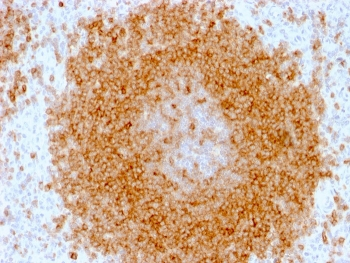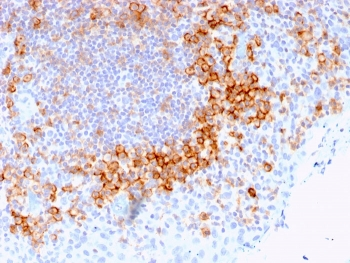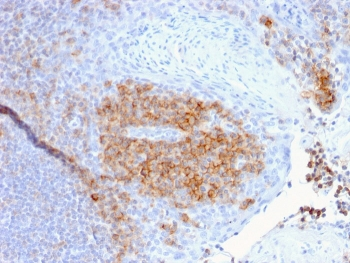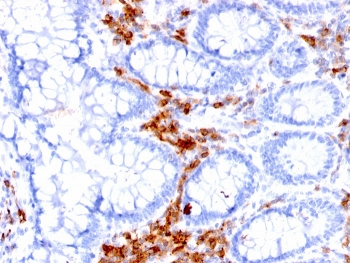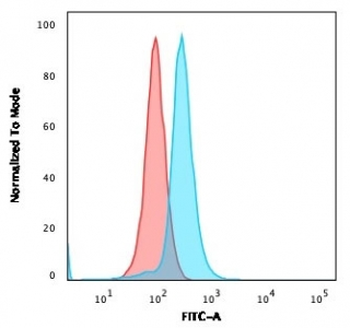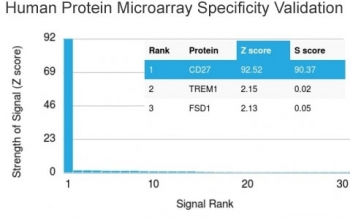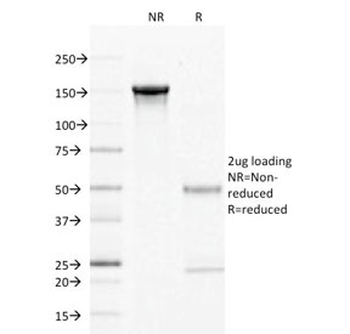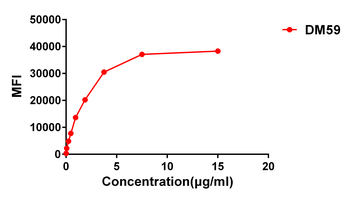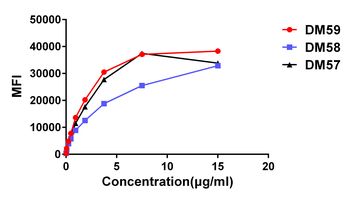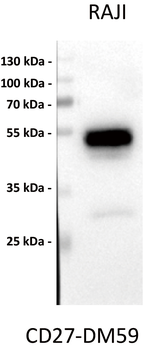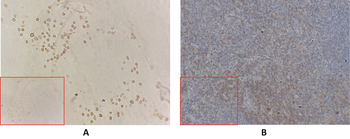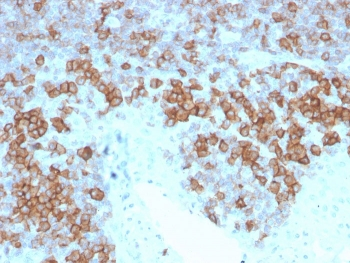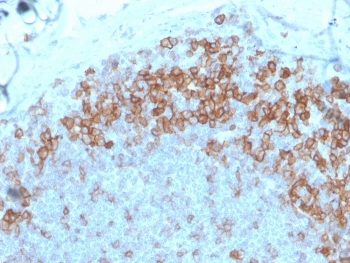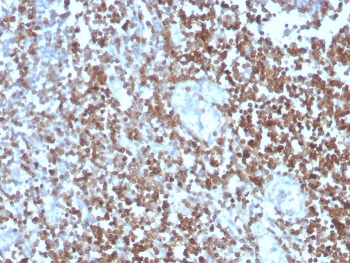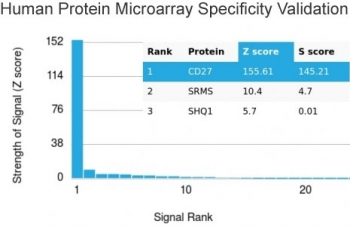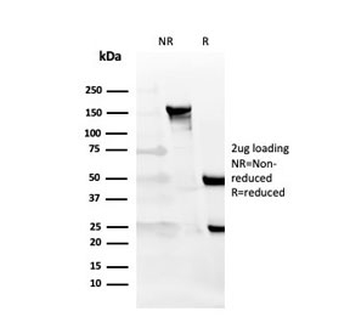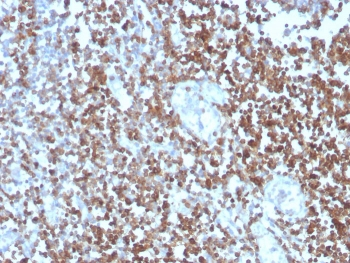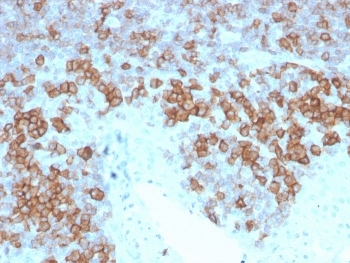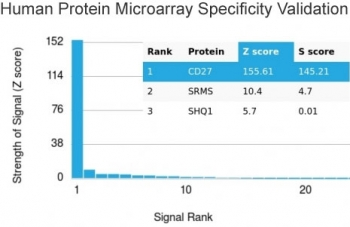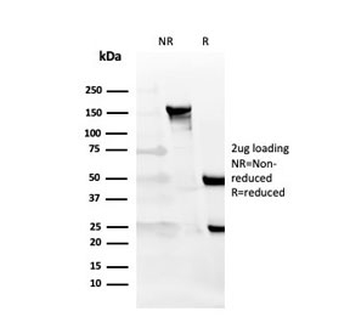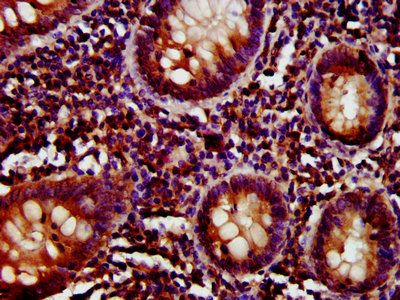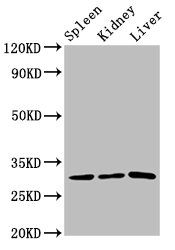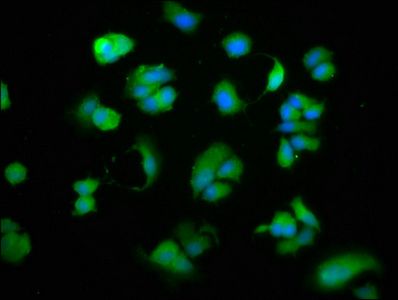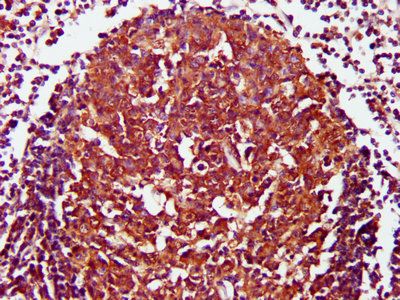You have no items in your shopping cart.
CD27 Antibody
Catalog Number: orb640041
| Catalog Number | orb640041 |
|---|---|
| Category | Antibodies |
| Description | Recognizes a protein of a disulfide-linked 120kDa dimer, identified as CD27. It is expressed on the majority of peripheral T cells, medullary thymocytes, memory-type B cells, and natural killer cells. It is a transmembrane phosphoglycoprotein that belongs to the tumor necrosis factor receptor (TNFR) superfamily. CD27 binds to its ligand CD70, a member of the TNF family, and induces T-cell co-stimulation and B-cell activation. It also interacts with TRAFs and is involved in activation of NFB and SAPK/JNK and induces apoptosis. |
| Species/Host | Mouse |
| Clonality | Monoclonal |
| Clone Number | LPFS2/1611 |
| Tested applications | ELISA, FACS, IF, IHC-P |
| Reactivity | Human |
| Isotype | Mouse IgG1, kappa |
| Immunogen | A recombinant full-length human CD27 protein was used as the immunogen for this CD27 antibody. |
| Antibody Type | Primary Antibody |
| Dilution range | ELISA (order BSA-free format for coating),Flow cytometry: 1-2ug/million cells in 0.1ml,Immunofluorescence: 1-2ug/ml,Immunohistochemistry (FFPE): 1-2ug/ml |
| Purity | Protein G affinity chromatography |
| Conjugation | Unconjugated |
| Formula | 0.2 mg/ml with 0.1 mg/ml BSA (US sourced), 0.05% sodium azide |
| Hazard Information | This CD27 antibody is available for research use only. |
| UniProt ID | P26842 |
| Storage | Store the CD27 antibody at 2-8°C (with azide) or aliquot and store at -20°C or colder (without azide). |
| Buffer/Preservatives | 0.2 mg/ml with 0.1 mg/ml rAlbumin (US sourced), 0.05% sodium azide |
| Note | For research use only |
| Application notes | Optimal dilution of the antibody should be determined by the researcher. |
| Expiration Date | 12 months from date of receipt. |

Immunofluorescent staining of human Ramos cells with CD27 antibody (clone LPFS2/1611, green) and Reddot nuclear stain (red).

IHC staining of FFPE human spleen with CD27 antibody (clone LPFS2/1611). HIER: boil tissue sections in pH9 10mM Tris with 1mM EDTA for 20 min and allow to cool before testing.
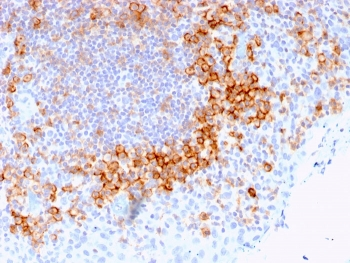
IHC staining of FFPE human tonsil with CD27 antibody (clone LPFS2/1611). HIER: boil tissue sections in pH9 10mM Tris with 1mM EDTA for 20 min and allow to cool before testing.
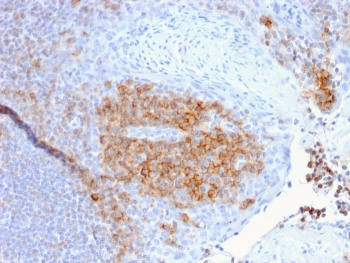
IHC staining of FFPE human tonsil with CD27 antibody (clone LPFS2/1611). HIER: boil tissue sections in pH9 10mM Tris with 1mM EDTA for 20 min and allow to cool before testing.
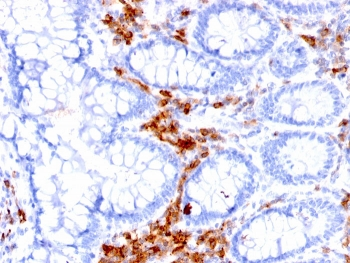
IHC staining of FFPE human colon with CD27 antibody (clone LPFS2/1611). HIER: boil tissue sections in pH9 10mM Tris with 1mM EDTA for 20 min and allow to cool before testing.

Flow cytometry testing of human Ramos cells with CD27 antibody (clone LPFS2/1611); Red=isotype control, Blue= CD27 antibody.
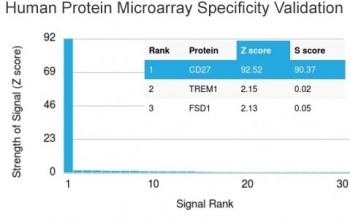
Analysis of HuProt (TM) microarray containing more than 19000 full-length human proteins using CD27 antibody (clone LPFS2/1611). These results demonstrate the foremost specificity of the LPFS2/1611 mAb. Z- and S- score: The Z-score represents the strength of a signal that an antibody (in combination with a fluorescently-tagged anti-IgG secondary Ab) produces when binding to a particular protein on the HuProt (TM) array. Z-scores are described in units of standard deviations (SD's) above the mean value of all signals generated on that array. If the targets on the HuProt (TM) are arranged in descending order of the Z-score, the S-score is the difference (also in units of SD's) between the Z-scores. The S-score therefore represents the relative target specificity of an Ab to its intended target.
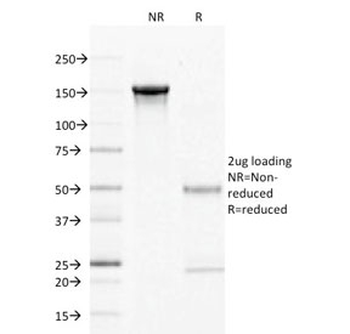
SDS-PAGE analysis of purified, BSA-free CD27 antibody (clone LPFS2/1611) as confirmation of integrity and purity.
Anti-CD27 antibody(DM59), Rabbit mAb [orb757382]
ELISA, FC, IHC, WB
Human
Rabbit
Monoclonal
Unconjugated
50 μg, 100 μg, 500 μg, 10 μg



